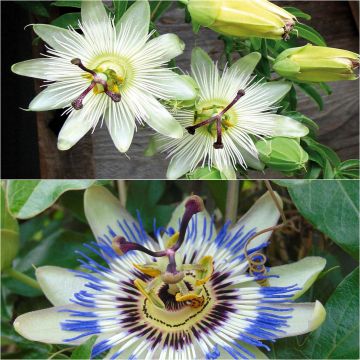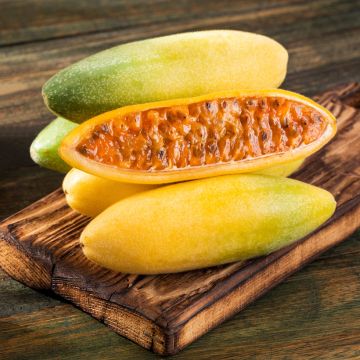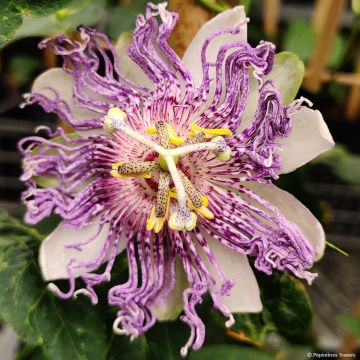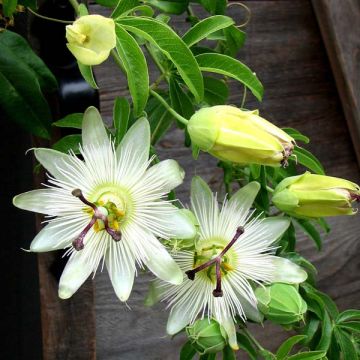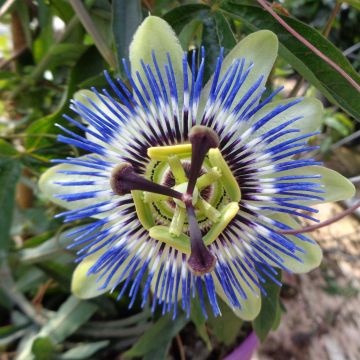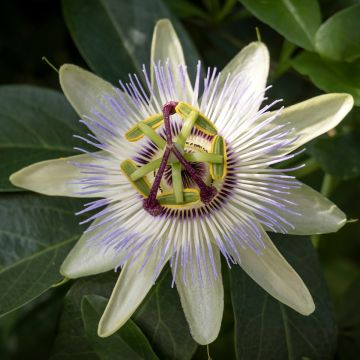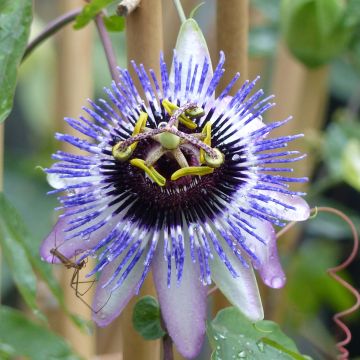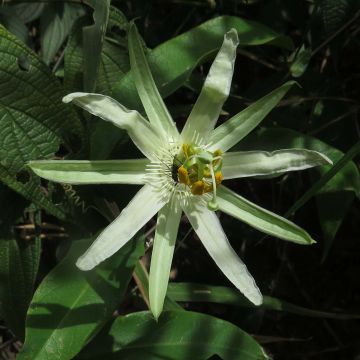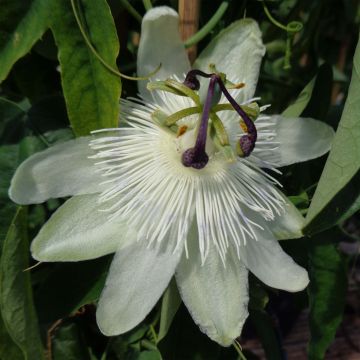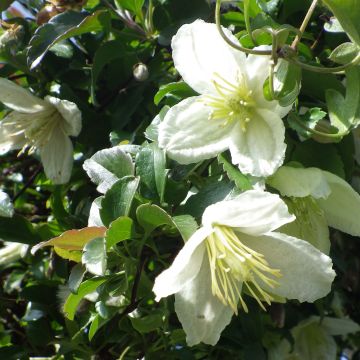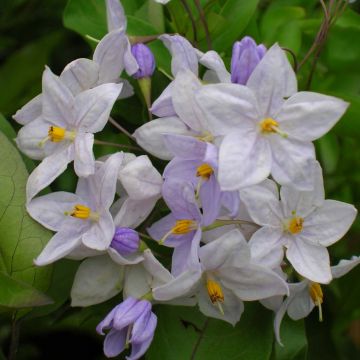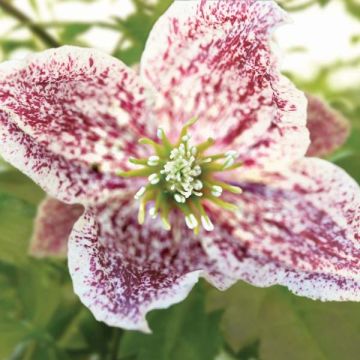

Passiflora Lady Betty Myles Young- Passion Flower


Passiflora Lady Betty Myles Young- Passion Flower


Passiflora Lady Betty Myles Young- Passion Flower
Passiflora Lady Betty Myles Young- Passion Flower
Passiflora Lady Betty Myles Young SAVORANOVA®
Passion Flower, Passion Vines
I've just received it. Awaiting flowering.
Jocelyne, 17/06/2021
Special offer!
Receive a €20 voucher for any order over €90 (excluding delivery costs, credit notes, and plastic-free options)!
1- Add your favorite plants to your cart.
2- Once you have reached €90, confirm your order (you can even choose the delivery date!).
3- As soon as your order is shipped, you will receive an email containing your voucher code, valid for 3 months (90 days).
Your voucher is unique and can only be used once, for any order with a minimum value of €20, excluding delivery costs.
Can be combined with other current offers, non-divisible and non-refundable.
Home or relay delivery (depending on size and destination)
Schedule delivery date,
and select date in basket
This plant carries a 6 months recovery warranty
More information
We guarantee the quality of our plants for a full growing cycle, and will replace at our expense any plant that fails to recover under normal climatic and planting conditions.
Would this plant suit my garden?
Set up your Plantfit profile →
Description
The Passiflora or Passionflower 'Lady Betty Myles Young' is another beautiful novelty in passion flowers for garden ornamentation. This superb variety, capable of surviving short frosts of around -7°C/-8°C (17.6°F), produces from late spring and throughout summer 30 to 40 flowers per day of an impressive size, measuring up to 12 cm (5in), with beautiful mauve colour highlighted by a crown of filaments in a brighter blue, black at the base, white in the middle. They are slightly fragrant and give way to many decorative fruits, yellow-orange when ripe. This exotic climber is also a very vigorous and undemanding plant in terms of soil. When planted in deep, light, fertile, and not-too-dry soil, it will reach its full potential. Gardeners in more continental climates will also appreciate its ease of cultivation in pots, to be stored away during winter.
Mostly originating from the tropical zones of South America, passionflowers belong to the large family of Passifloraceae, which includes 400 species and numerous spontaneous or horticultural hybrids. 'Lady Betty Myles Young' SAVORANOVA® is one of them, obtained in the United Kingdom. This climbing plant attaches itself to its support using tendrils, reaching a minimum height of 3 meters (10 feet) with a similar spread. It is characterized by its quadrangular stems adorned with large leaves measuring up to 14.5 cm (6in) by 19 cm (8in), divided into 3 to 5 thick, deeply veined lobes. This generous mass of dark green foliage is more or less evergreen depending on the severity of the winter. Its flowering occurs from spring to autumn, sometimes all year round in very mild climates, in the form of large flowers measuring 10 to 12 cm (4 to 5in) in diameter that constantly repeat on the plant. Its slightly fragrant flowers are formed of mauve petals, sometimes streaked with white, with a central crown of filaments streaked with black-violet, white, and ultramarine blue. The cream-coloured stamen is covered in yellow pollen, and the pistil is purple. The unusual shape of the flower is quite durable, where the petals and sepals curl, while the filaments' crown folds and straightens to avoid self-pollination. Once pollinated, the flowers give way to oval fruits that are very acidic, not edible, initially green and then orange when ripe, measuring up to 6.5 cm (3in) long and 4 cm (2in) wide.
This hardy Passionflower, resistant up to -7°C/-8°C (17.6°F), is not a demanding exotic plant like some orchids can be. Modern hybrids combine the robustness and hardiness of Passiflora caerulea, sometimes invasive. They grow effortlessly in rich, moist but not too dry, well-drained soil in a sunny, sheltered location. Pruning at the end of flowering involves reducing the branches to maintain a beautiful habit. 'Lady Betty Myles Young' thrives in mild regions and can become as lush as the most beautiful clematis when planted in the ground. With its generous and exotic charm, the 'Lady Betty Myles Young' Passionflower is a wonderful plant for dressing up walls, fences, trellises, porches, lattice works, and hedges. It is also highly appreciated in verandas, where it will withstand cold winters without damage.
Report an error about the product description
Passiflora Lady Betty Myles Young- Passion Flower in pictures
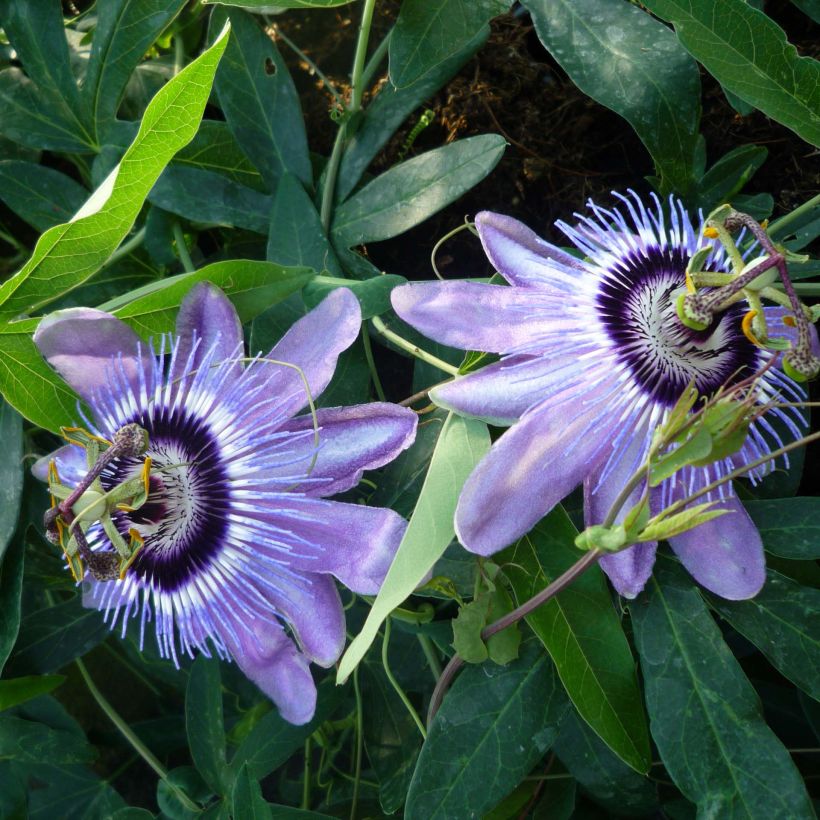



Plant habit
Flowering
Foliage
Botanical data
Passiflora
Lady Betty Myles Young SAVORANOVA®
Passifloraceae
Passion Flower, Passion Vines
Cultivar or hybrid
Other Passionflowers
View all →Planting and care
The 'Lady Betty Myles Young' passionflower is a sun-loving and heat-loving plant that should be sheltered from cold and drying winds. Plant it in ordinary, deep, well-worked and well-drained soil. Hardy down to -7/-8°C (19.4/17.6°F), it should not be planted in open ground, except in a protected position, with good winter mulching. Place it on a support to support the weight of vegetation. Direct its branches well onto the support as the vegetation is exuberant. Watch out for scale insects, whiteflies, and the cucumber mosaic virus. Treat preventively.
Planting period
Intended location
Care
-
, onOrder confirmed
Reply from on Promesse de fleurs
Similar products
Haven't found what you were looking for?
Hardiness is the lowest winter temperature a plant can endure without suffering serious damage or even dying. However, hardiness is affected by location (a sheltered area, such as a patio), protection (winter cover) and soil type (hardiness is improved by well-drained soil).

Photo Sharing Terms & Conditions
In order to encourage gardeners to interact and share their experiences, Promesse de fleurs offers various media enabling content to be uploaded onto its Site - in particular via the ‘Photo sharing’ module.
The User agrees to refrain from:
- Posting any content that is illegal, prejudicial, insulting, racist, inciteful to hatred, revisionist, contrary to public decency, that infringes on privacy or on the privacy rights of third parties, in particular the publicity rights of persons and goods, intellectual property rights, or the right to privacy.
- Submitting content on behalf of a third party;
- Impersonate the identity of a third party and/or publish any personal information about a third party;
In general, the User undertakes to refrain from any unethical behaviour.
All Content (in particular text, comments, files, images, photos, videos, creative works, etc.), which may be subject to property or intellectual property rights, image or other private rights, shall remain the property of the User, subject to the limited rights granted by the terms of the licence granted by Promesse de fleurs as stated below. Users are at liberty to publish or not to publish such Content on the Site, notably via the ‘Photo Sharing’ facility, and accept that this Content shall be made public and freely accessible, notably on the Internet.
Users further acknowledge, undertake to have ,and guarantee that they hold all necessary rights and permissions to publish such material on the Site, in particular with regard to the legislation in force pertaining to any privacy, property, intellectual property, image, or contractual rights, or rights of any other nature. By publishing such Content on the Site, Users acknowledge accepting full liability as publishers of the Content within the meaning of the law, and grant Promesse de fleurs, free of charge, an inclusive, worldwide licence for the said Content for the entire duration of its publication, including all reproduction, representation, up/downloading, displaying, performing, transmission, and storage rights.
Users also grant permission for their name to be linked to the Content and accept that this link may not always be made available.
By engaging in posting material, Users consent to their Content becoming automatically accessible on the Internet, in particular on other sites and/or blogs and/or web pages of the Promesse de fleurs site, including in particular social pages and the Promesse de fleurs catalogue.
Users may secure the removal of entrusted content free of charge by issuing a simple request via our contact form.
The flowering period indicated on our website applies to countries and regions located in USDA zone 8 (France, the United Kingdom, Ireland, the Netherlands, etc.)
It will vary according to where you live:
- In zones 9 to 10 (Italy, Spain, Greece, etc.), flowering will occur about 2 to 4 weeks earlier.
- In zones 6 to 7 (Germany, Poland, Slovenia, and lower mountainous regions), flowering will be delayed by 2 to 3 weeks.
- In zone 5 (Central Europe, Scandinavia), blooming will be delayed by 3 to 5 weeks.
In temperate climates, pruning of spring-flowering shrubs (forsythia, spireas, etc.) should be done just after flowering.
Pruning of summer-flowering shrubs (Indian Lilac, Perovskia, etc.) can be done in winter or spring.
In cold regions as well as with frost-sensitive plants, avoid pruning too early when severe frosts may still occur.
The planting period indicated on our website applies to countries and regions located in USDA zone 8 (France, United Kingdom, Ireland, Netherlands).
It will vary according to where you live:
- In Mediterranean zones (Marseille, Madrid, Milan, etc.), autumn and winter are the best planting periods.
- In continental zones (Strasbourg, Munich, Vienna, etc.), delay planting by 2 to 3 weeks in spring and bring it forward by 2 to 4 weeks in autumn.
- In mountainous regions (the Alps, Pyrenees, Carpathians, etc.), it is best to plant in late spring (May-June) or late summer (August-September).
The harvesting period indicated on our website applies to countries and regions in USDA zone 8 (France, England, Ireland, the Netherlands).
In colder areas (Scandinavia, Poland, Austria...) fruit and vegetable harvests are likely to be delayed by 3-4 weeks.
In warmer areas (Italy, Spain, Greece, etc.), harvesting will probably take place earlier, depending on weather conditions.
The sowing periods indicated on our website apply to countries and regions within USDA Zone 8 (France, UK, Ireland, Netherlands).
In colder areas (Scandinavia, Poland, Austria...), delay any outdoor sowing by 3-4 weeks, or sow under glass.
In warmer climes (Italy, Spain, Greece, etc.), bring outdoor sowing forward by a few weeks.






























